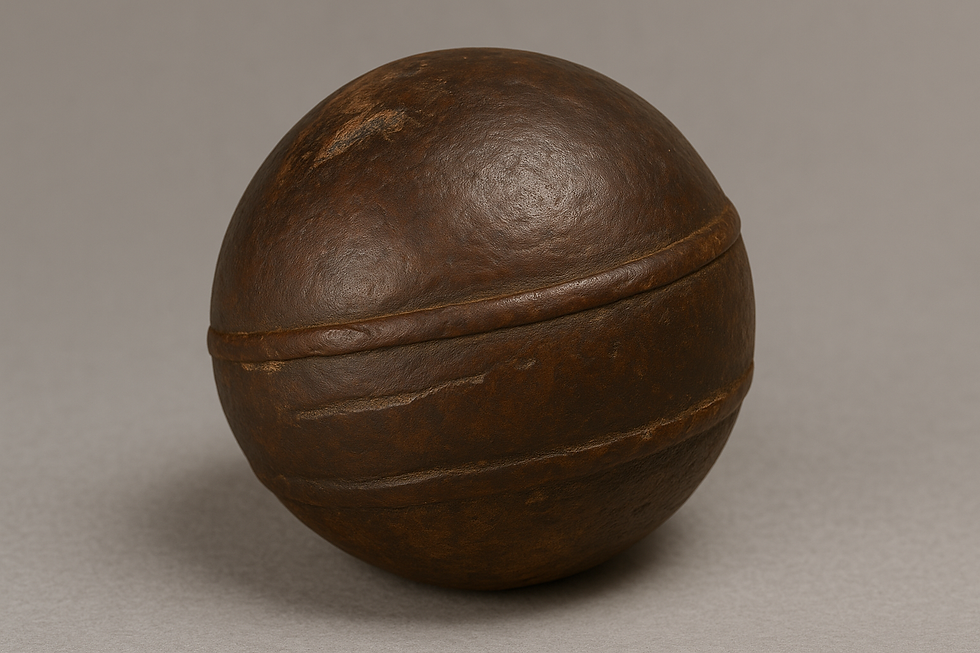The Copper Connection: Michigan’s Ancient Metal Found in England
- Kristi Bass

- Jul 15
- 3 min read
Updated: Jul 25

Could ancient transatlantic trade have taken place thousands of years before Columbus set sail? A recent archaeological revelation may be rewriting what we thought we knew about ancient global contact.
In a stunning twist that has ignited debate among historians and alternative researchers alike, trace elements of Great Lakes copper — specifically from Michigan's Upper Peninsula — have reportedly been found in Bronze Age artifacts in England. The implications of this discovery are nothing short of revolutionary. If verified and accepted by the academic community, it suggests that transoceanic contact between North America and Europe may have occurred more than 3,000 years ago, centuries before the Vikings and millennia before Columbus.
The Copper of the Ancients
The Upper Peninsula of Michigan is home to one of the purest sources of native copper in the world. Long before industrial mining operations began in the 19th century, this area was the site of extensive prehistoric mining activity. Between 5,000 and 1,200 BCE, ancient miners using stone tools removed over 500,000 tons of copper from the region — but curiously, much of it appears to be missing.
Where did it all go?
That question has haunted researchers and history buffs for decades. Some theorists suggest the copper fueled the Bronze Age explosion in Europe and the Mediterranean, which required vast quantities of the metal to create bronze — an alloy of copper and tin.
A Trail Across the Atlantic?
In recent years, some metallurgical analyses have hinted at a chemical fingerprint — a kind of isotopic signature — that can be used to trace copper artifacts back to their source. In several cases, copper used in European Bronze Age tools and weapons appeared to match the chemical profile of copper from the Great Lakes region, particularly Isle Royale and the Keweenaw Peninsula.
This is where the recent discovery comes into focus: artifacts from Bronze Age burial sites in England — some dated between 2,000 and 1,200 BCE — were found to contain copper with a near-perfect isotopic match to Michigan sources. These findings were first highlighted in obscure academic publications and are now gaining attention in the wider archaeological community.
Mainstream Skepticism and Alternate Theories
Unsurprisingly, the mainstream archaeological establishment remains cautious. Most scholars argue that there's no solid evidence of ships, infrastructure, or cultural transmission that would prove regular contact between North America and Europe during the Bronze Age. Skeptics suggest contamination or alternate sourcing explanations, though none have fully accounted for the chemical match.
However, alternative history researchers point out that the ancient seafaring cultures of the Mediterranean — notably the Minoans and the Phoenicians — were capable of long ocean voyages. These civilizations had advanced navigation skills and large cargo ships capable of crossing vast distances. Some propose that a copper trade route may have existed, kept secret or eventually lost to history after the collapse of Bronze Age civilizations around 1200 BCE.
The Bigger Picture: A Hidden Chapter of Human History?
If the Michigan copper discovery holds up under scrutiny, it would represent a paradigm shift in our understanding of human history. It would mean that ancient civilizations were far more interconnected than we’ve been led to believe. It would also open the door to reevaluating indigenous oral histories and ancient legends that speak of long voyages, sky boats, and foreign visitors.
Even more tantalizing is the thought that this is just the beginning. If copper moved across the Atlantic, what else did? Ideas? Technologies? People?
Final Thoughts
Whether you’re a hardened skeptic or a seeker of hidden truths, the idea that Michigan copper ended up in ancient England is a compelling mystery — one that challenges the neat narrative of isolated civilizations developing independently. As new technologies allow us to test metals and materials with unprecedented precision, we may soon uncover a web of connections that stretches across time and oceans.
For now, the copper connection remains one of the most fascinating archaeological riddles of our time — a shining thread of metal linking the Old World with the New, thousands of years before history says it should have happened.


